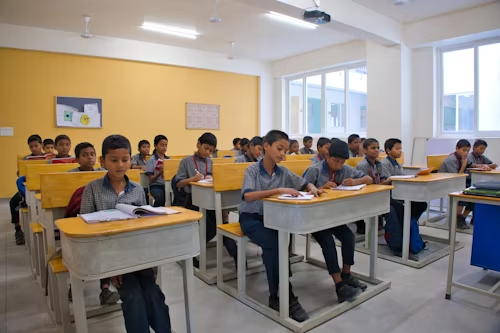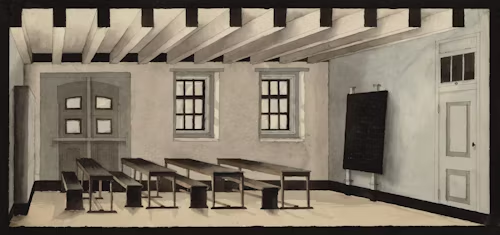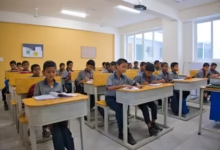
In today’s fast‑evolving education landscape, creating a dynamic, engaging, and adaptive environment is key. That’s precisely what Your Classroom 30x aims to be — not just a classroom in name, but an ecosystem for growth, exploration, and transformation. In this article, I’ll take you on a detailed tour of Your Classroom 30x — its philosophy, structure, benefits, design, teaching methods, and how it can elevate learning for teachers and students alike.
What is Your Classroom 30x?
Your Classroom 30x is more than a conventional classroom. It’s a concept, a mindset, and a structure built to magnify learning experiences “30 times” — hence the “30x” in its name. The goal is to multiply engagement, retention, creativity, and collaboration within the space. Your Classroom 30x embraces technology, flexible layouts, student-centered pedagogy, and continual feedback loops.
When you step into Your Classroom 30x, you don’t merely sit and listen — you explore, experiment, interact, and reflect. The space is designed to adapt to diverse learners, different subjects, and evolving teaching styles. Whether math, language, science, arts, or interdisciplinary projects, Your Classroom 30x supports and amplifies the learning journey.
Why “30x”? The Philosophy Behind the Name
The “30x” in Your Classroom 30x is symbolic:
- 30 × engagement: Students become deeply involved in lessons, not passive observers.
- 30 × retention: New methods ensure learners retain knowledge more fully.
- 30 × creativity: Space, prompts, and support help students think outside standard frameworks.
- 30 × collaboration: Peer learning, group work, and shared inquiry become central.
- 30 × feedback: Frequent, formative feedback loops speed growth.
Hence, Your Classroom 30x is the promise that, through intentional design and practice, a classroom can deliver exponential value beyond the ordinary. It’s a bold claim — but one built on research-backed strategies and real classroom innovation.
Key Principles of Your Classroom 30x
To bring Your Classroom 30x to life, the following guiding principles play a central role:
- Student-Centered Design
In Your Classroom 30x, students are active partners. Seating isn’t fixed; walls are writable; resources are accessible. Tools and activities are tailored to different learning styles. The curriculum adapts to student interests and inquiry pathways. - Blended Tech Integration
Your Classroom 30x uses technology not for its own sake, but to amplify teaching and learning. Interactive displays, tablets, AR/VR modules, formative quiz platforms, collaborative software — all are woven in intentionally to support key learning goals. - Flexible Physical Layouts
Desks, tables, cushions, stools, and mobile partitions let you rearrange space for lectures, small-group work, workshops, or reflection circles. Your Classroom 30x is never rigid — it evolves with lesson demands. - Formative Assessment & Feedback
Frequent check-ins, peer review, exit tickets, reflections — these are baked into Your Classroom 30x. Teachers and learners use quick feedback to recalibrate direction, address misconceptions, and deepen understanding. - Inquiry-Based and Project-Based Learning
Rather than one-size-fits-all lectures, Your Classroom 30x thrives on questions, investigations, and real-world problems. Learners drive inquiry, research, design, test, and present — supported and scaffolded by the teacher. - Inclusive & Differentiated Practice
Every student’s needs matter. Your Classroom 30x offers scaffolds, extension tasks, peer support, and multiple entry points into content. All learners can access the curriculum at their level. - Reflective Culture & Metacognition
Students are encouraged to think about how they think: journaling, self-assessment, goal setting. Within Your Classroom 30x, learners become more aware of their strategies, strengths, and growth edges.
Designing Your Classroom 30x: Physical & Digital Setup
When planning Your Classroom 30x — whether in a physical school space or virtually — consider these elements:
Physical Design
- Modular furniture: Lightweight tables and chairs that can be reconfigured.
- Writable surfaces: Walls, desks, windows — places to sketch, brainstorm, map.
- Tech hubs: Charging stations, tablets/laptops, VR stations, projection screens.
- Resource center: Books, manipulatives, art supplies, tools, reference materials.
- Zones: Quiet reading nook, collaboration hub, presentation stage, maker corner.
- Lighting & acoustics: Adjustable lights, sound absorption solutions to reduce noise.
- Storage & labeling: Clear, accessible bins; labeled tools for student independence.
Digital Design
- Learning Management System (LMS): Central hub for assignments, feedback, resources.
- Collaborative platforms: Google Workspace, Microsoft Teams, or similar tools for co-creation.
- Interactive tools: Kahoot!, Quizizz, Nearpod, Pear Deck for formative checks.
- Virtual extensions: AR/VR modules, simulation software, virtual tours.
- Digital portfolio systems: Students collect and reflect on artifacts of learning.
- Communication tools: Class chat, discussion boards, teacher-student messaging.
When the physical and digital environments mesh, Your Classroom 30x becomes seamless: students move among zones, switch between screens and hands-on, and engage with content in multiple modes.
Teaching & Learning Strategies in Your Classroom 30x
Here’s how teaching and learning unfold in Your Classroom 30x:
1. Launch with a Driving Question or Challenge
Every unit begins with a central question or real-world challenge. This question guides exploration, frames inquiry, and provides relevance. For example: “How might we design a water filtration system for our local community?” That becomes the scaffold within Your Classroom 30x.
2. Scaffolded Inquiry and Mini‑Lessons
Rather than hour-long lectures, the teacher offers short, focused mini-lessons (10–15 minutes) interspersed with hands-on work, discussion, and formative checks. In Your Classroom 30x, these mini-lessons respond to student questions and needs.
3. Rotations Between Zones & Modes
Students may rotate through zones: individual research, partner discussion, tech‑aided simulation, hands-on prototyping. This variety keeps momentum and reinforces different modes of thinking.
4. Frequent Feedback & Adjustment
As students work, the teacher circulates, poses questions, conducts quick spot-checks or exit tickets. In Your Classroom 30x, feedback is ongoing and responsive — letting the lesson adjust midstream.
5. Peer Coaching, Review & Collaboration
Group work is structured with roles (facilitator, summarizer, researcher, tester). Students critique each other using guiding rubrics. In Your Classroom 30x, peer-to-peer learning is central, not optional.
6. Student Presentation & Reflection
At unit end, students present their work (physical models, digital artifacts, demonstrations). Reflection, both written and oral, helps solidify learning. In Your Classroom 30x, the presentation is not a showpiece — it’s a learning moment.
7. Iterative Revision
Because learning is iterative, Your Classroom 30x allows students to revisit, refine, and revamp their work after feedback. This cycle fosters depth rather than surface completion.
Benefits of Your Classroom 30x
What makes Your Classroom 30x powerful? Let’s explore major benefits for students, teachers, and the school community.
For Students
- Deeper understanding: Active inquiry leads to long-term retention.
- Ownership over learning: Students feel agency and responsibility.
- Skill development: Critical thinking, collaboration, creativity, metacognition.
- Engagement: Diverse modes keep motivation high.
- Differentiation: Students can work at their zone of proximal development.
For Teachers
- Responsive instruction: You can pivot, support, or enrich based on real-time data.
- Professional growth: The approach encourages experimentation and reflection.
- Stronger relationships: Working more closely with students fosters deeper teacher-student rapport.
- Reduced burnout: A more dynamic classroom often feels lighter and more energizing.
For School & Community
- Showcase innovation: Your Classroom 30x becomes a model others might emulate.
- Stronger home-school connection: Documentation and reflection tools let parents see growth.
- Future-ready preparation: Students leave better prepared for college, work, and life with 21st-century skills.
Overcoming Challenges & Implementation Tips
Implementing Your Classroom 30x is ambitious, so here are some tips and cautions:
- Start small, iterate
You don’t need full transformation overnight. Begin with one unit or one subject and iterate. Use feedback and reflection to improve. - Provide teacher training & support
Professional learning communities (PLCs), peer observations, coaching, and modeling help teachers adopt the mindset and tools. - Allocate flexible budgeting
Funds for furniture, tech, materials, training — use modular investments, seek grants, or repurpose existing resources. - Balance freedom and structure
While flexibility is central, scaffolding (rubrics, checklists, guiding questions) helps maintain rigor. Your Classroom 30x benefits from clear guidelines. - Manage class size & grouping
In large classes, orchestrating group transitions can be tricky. Use student rotations, signals, routines, and clear roles to smooth transitions. - Ensure equity & access
Some students may lack tech access or confidence. Provide scaffolds, peer mentors, backup options, and sensitivity to learners’ contexts. - Sustain reflection cycles
Regularly review what’s working and what isn’t. Use student feedback, observation, assessment data to refine Your Classroom 30x continuously.
Real‑Life Example: Bringing Your Classroom 30x to Life
Let me illustrate with a hypothetical (yet realistic) example of Your Classroom 30x in a middle school science class.
The Unit: “How Clean Is Our Water?”
- Driving Question: “Can we design a low-cost filtration system to make local river water drinkable?”
- Zones Setup:
- Research zone: tablets, articles, videos about water filtration.
- Design zone: materials (sand, gravel, fabric, tubes).
- Testing zone: water testers, sample jars, timers.
- Reflection zone: whiteboard prompts, journals.
- Tech zone: simulation software on water flow, dashboards.
Flow of Activities
- Launch & brainstorm
Students view a short video of polluted rivers. They create questions: What impurities are present? How can we remove them? - Mini‑lesson: Filtration methods
The teacher presents 10 minutes on pore size, adsorption, chemical treatment. Then students brainstorm ideas. - Divide into small teams
Each team receives a different problem variant (e.g. industrial waste, agricultural runoff, sediment load). - Design & prototype
Students use materials to build prototypes (sand columns, charcoal layers, mesh). They record hypotheses and designs. - Test & collect data
Using water samples and sensors, they test each design, measure turbidity, pH, contamination. They record datasets. - Analyze & revise
Based on results, they tweak designs, optimize layers, test again. - Presentation & reflection
Teams present designs, data analysis, challenges, next steps. They reflect on strategies, teamwork, and what they’d do next. - Extension
Some students design digital simulations; others research real-world water treatment plants; a few prepare recommendations for local communities.
Across this process, Your Classroom 30x operates in full force: changing zones, tech integration, scaffolding, feedback, reflection, iteration, collaboration — with the driving question always in view.
Tips for Writing Content‑Rich Pages for Your Classroom 30x (for Your Google Website)
Because you intend to host this content on your Google website, here are suggestions to optimize presentation, SEO, and readability:
- Use headings & subheadings (H2, H3) with “Your Classroom 30x” periodically in headings (e.g. “Implementing Your Classroom 30x in Your School”, “Benefits of Your Classroom 30x for Students”).
- Include real examples or case studies (as above) — these make your content feel more genuine and grounded.
- Use lists, bullet points, tables to break long text and improve readability.
- Embed images or diagrams (e.g. layout sketches, student work, prototype designs) to make abstract ideas concrete.
- Internal links: Link to other pages you may create (e.g. “projects in Your Classroom 30x”, “teacher training for Your Classroom 30x”).
- Keyword density: Use “Your Classroom 30x” naturally in intros, headings, and a few times per section—but avoid forced overuse. The article above repeats it ~12–15 times; you may add a few more for SEO, but always within context.
- Meta description & alt text: Use “Your Classroom 30x” in meta title, description, and image alt text to help search engines.
- Regular updates: Add blog updates, photos, student feedback about Your Classroom 30x to keep your page fresh.
Potential Variations & Extensions of Your Classroom 30x
Your Classroom 30x can adapt to different grades, subjects, and modes:
- Elementary school: Use stations with play-based zones, story corners, maker corners, mini labs.
- High school / secondary: Project-based labs (engineering, debate, media), deeper inquiry, independent capstones.
- Hybrid / online: Virtual zones, breakout rooms, digital labs — Your Classroom 30x can transcend walls.
- Special subjects: Art, music, drama — using zones for improvisation, creation, critique, and showcase.
- Cross-disciplinary projects: Combine math, science, language, social studies — Your Classroom 30x becomes a hub for interdisciplinary inquiry.
Wherever you apply it, the core identity remains: amplified engagement, feedback, flexibility, creativity, iteration, and ownership.
Common Questions & Answers
Q: Will Your Classroom 30x work with large class sizes?
A: Yes — by using rotations, student leadership roles, peer coaching, and smart zoning. While transitions require planning, routines and clear signals help maintain flow.
Q: Is technology mandatory?
A: No — but used wisely, technology accelerates possibilities. Even a low-tech Your Classroom 30x (with paper, manipulatives, visual prompts) can be powerful. Tech is a multiplier, not a requirement.
Q: How do we measure success?
A: Use qualitative and quantitative indicators: student surveys (engagement, ownership), assessment gains, depth of student work, reflection journals, portfolio growth, and observable shifts in student mindset.
Q: How much does it cost?
A: Costs vary. Start with minimal investments (reconfigurable furniture, basic tech), repurpose existing materials, and scale over time. Many successful implementations begin with low budget and grow.
Q: How do I convince stakeholders (school admin, parents)?
A: Share pilot results, student reflections, sample projects, and research on inquiry-based learning. Offer small demonstrations or open classroom days to show how Your Classroom 30x operates in practice.

Conclusion: The Promise of Your Classroom 30x
In a world that demands adaptability, critical thinking, and creativity, classrooms must evolve. Your Classroom 30x encapsulates that evolution: it transforms passive lecture halls into vibrant ecosystems of inquiry, iteration, and growth. By centering students, weaving in technology, prioritizing feedback, and embracing flexible design, Your Classroom 30x pushes the boundaries of what education can become.
If you adopt Your Classroom 30x, you’re not just building a better classroom—you’re nurturing learners who are curious, capable, reflective, and ready to take on complex challenges. As you roll it out, start small, listen carefully, iterate boldly, and celebrate incremental gains. Over time, your classroom won’t just be “a room” — it will be Your Classroom 30x in full effect: a place where the multiplier effect of meaningful learning happens every day.





